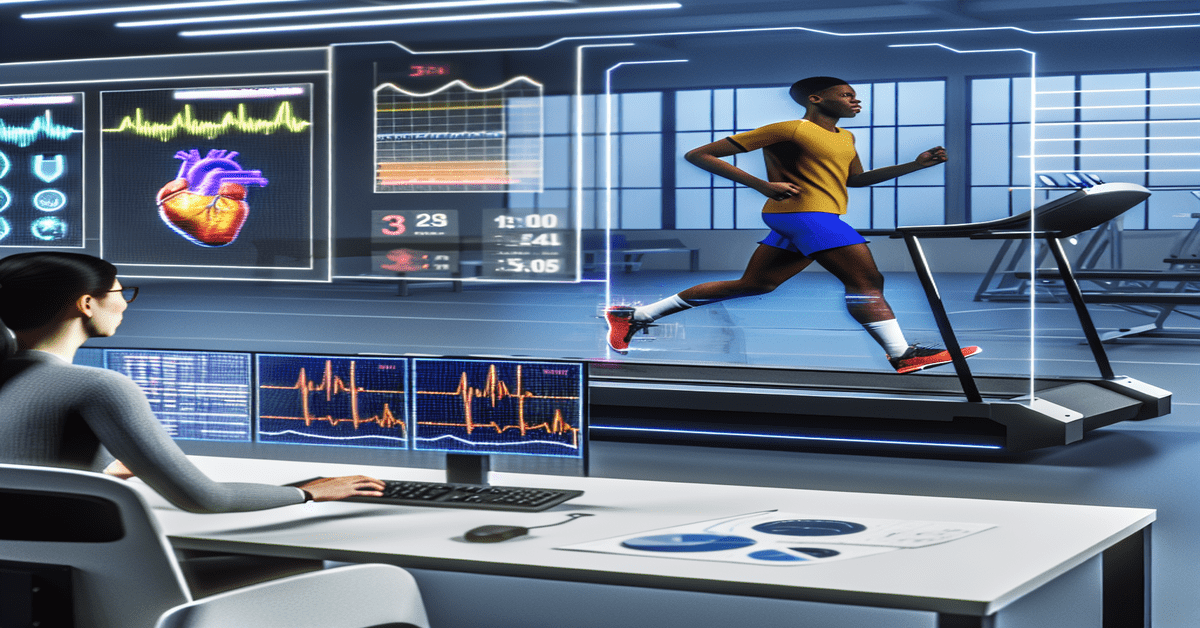Unlocking the Power of Predictive Athlete Performance Modeling
In the world of competitive sports, every edge counts. Teams and coaches are constantly seeking ways to optimize their strategies, recruit the best talent, and keep their athletes performing at the highest level. Enter the groundbreaking field of predictive athlete performance modeling, where cutting-edge machine learning algorithms and biometric data integration are revolutionizing the way we understand and forecast athletic performance.
The Building Blocks of Predictive Modeling
At the core of this innovative approach lies the integration of biometric data into sophisticated machine learning models. By leveraging data points such as heart rate, blood pressure, and muscle activity, these models gain unprecedented insights into an athlete’s physical condition and readiness for competition. This wealth of information allows coaches and trainers to make data-driven decisions that optimize training regimens and maximize performance outcomes.
But how exactly do these models work? The secret lies in the power of machine learning algorithms like PSO-SVR and MLP. These advanced techniques excel at processing complex, non-linear data sets, making them ideally suited for the intricate world of athlete performance prediction. By analyzing vast amounts of historical data, including biometric markers, these algorithms can uncover hidden patterns and relationships that might otherwise go unnoticed.
Transforming the Sports Landscape
The implications of predictive athlete performance modeling are far-reaching and transformative. Let’s explore some of the key areas where this technology is making waves:
1. Performance Evaluation and Prediction
Imagine having the ability to accurately predict an athlete’s performance before they even step onto the field or court. That’s precisely what these models aim to achieve. By analyzing past data and biometric markers, machine learning algorithms can forecast future outcomes with remarkable precision. This predictive power allows coaches to identify key factors influencing performance, tailor training strategies accordingly, and make informed decisions during critical moments of competition.
2. Player Recruitment and Strategy Development
In the high-stakes world of professional sports, recruiting the right talent can make or break a team’s success. Predictive modeling takes the guesswork out of this process by evaluating potential performance based on a wide range of data points, including biometric indicators. Armed with these insights, teams can make smarter, more targeted recruitment decisions that align with their overall strategy and goals.
3. Injury Prevention and Recovery
Athlete well-being is paramount, and predictive modeling plays a crucial role in safeguarding their health. By continuously monitoring biometric data, these models can detect early signs of fatigue, overexertion, or potential injury risk. This proactive approach allows coaches and medical staff to intervene promptly, implement targeted recovery strategies, and minimize the likelihood of severe injuries that could sideline athletes for extended periods.
The Future of Sports Performance
As the field of predictive athlete performance modeling continues to evolve, the possibilities are truly exciting. With each passing year, machine learning algorithms become more sophisticated, and the integration of biometric data grows more seamless. This confluence of technological advancements opens up new frontiers in sports performance optimization.
Imagine a future where wearable devices continuously stream real-time biometric data to predictive models, enabling coaches to make split-second decisions based on up-to-the-moment insights. Picture a world where virtual reality simulations, powered by predictive modeling, allow athletes to train in hyper-realistic scenarios that mimic the demands of actual competition. The potential applications are limited only by our imagination.
Embracing the Data-Driven Era
As we stand on the cusp of this data-driven revolution in sports, it’s clear that predictive athlete performance modeling is here to stay. Teams and organizations that embrace this technology will undoubtedly gain a competitive advantage, while those who resist may find themselves struggling to keep pace.
But embracing this new era requires more than just adopting the latest tools and techniques. It demands a fundamental shift in mindset, a willingness to let data guide decision-making, and a commitment to continuous learning and adaptation. Only by fostering a culture of innovation and collaboration can sports organizations fully harness the power of predictive modeling.
The Bigger Picture
While the focus of this article has been on the world of sports, it’s important to recognize that the implications of predictive modeling extend far beyond the playing field. The principles and techniques discussed here have the potential to transform industries ranging from healthcare and finance to manufacturing and beyond.
As we continue to collect and integrate vast amounts of data, the opportunities for predictive modeling are virtually endless. By leveraging the power of machine learning and biometric data integration, we can unlock new insights, drive innovation, and make smarter, more informed decisions across all aspects of society.
So, whether you’re a sports enthusiast, a data scientist, or simply someone who is curious about the future, now is the time to take notice. The era of predictive modeling is upon us, and the possibilities are truly tantalizing.
I invite you to share your thoughts and experiences on this topic in the comments section below. Together, let’s explore the exciting world of predictive athlete performance modeling and envision a future where data-driven insights propel us to new heights of success and achievement.
#PredictiveModeling #AthleticPerformance #MachineLearning #BiometricData #SportsTechnology
-> Original article and inspiration provided by Nature
-> Connect with one of our AI Strategists today at ReviewAgent.ai


